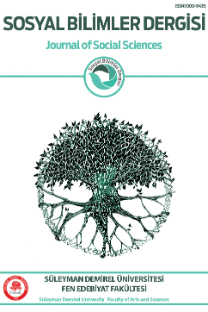Illegal Migrations Along the Balkan Routes
-
Illegal Migrations Along the Balkan Routes
illegal migrations, Balkans, human trafficking, smuggling organized crime,
___
- Ayhan Akif, Trafficking in Persons in South East Europe and Its Human Security Implications. Trafficking in Persons in South East Europe - a Threat to Human Security. Vienna: Austrian Federal Ministry of Defence (BMLV), Sept. 2006, pp.69-76.
- Bales, Kevin, Understanding Slavery Today. Berkeley: University of California Press, 2005.
- Boissevain, Jeremy, Friends of Friends. Networks, manipulators and coalitions. Oxford: Basil Blackwell, 1974.
- Cameron, Sally and Newman, Edmond, Trafficking in human$: social, cultural and political dimensions. United Nations University Press, NY, 2008.
- Clark, Michele, Human Trafficking Casts Shadow on Globalization. Traffickers reap huge profits at the expense of society's most vulnerable. YaleGlobal, April 23, 2003.
- http://yaleglobal.yale.edu/content/human-trafficking-casts-shadow-globalization.
- Dimitrova, Nadya, Combating Human Trafficking in the Context of European Security – Interdisciplinary and Cross-sectoral Anti-trafficking Policies in South East Europe. Trafficking in Persons in South East Europe - a Threat to Human Security. Vienna: Austrian Federal Ministry of Defence (BMLV), Sept. 2006, pp. 39-68.
- IOM, Handbook on Direct Assistance for Victims of Trafficking, 2007.
- Los, Maria, “The Post-Communist State, Market and Crime”, Crime, Law and Social Change, Vol.40, No, 2–3, Netherlands: Kluwer Academic Publishers, 2003, pp.145-169.
- Meltzer Milton, Slavery: A World History,Paperback, 1993.
- Narli, Nilufer, Human Trafficking and Smuggling: the Process, the Actors and the Victim Profile. Trafficking in Persons in South East Europe - a Threat to Human Security. Vienna: Austrian Federal Ministry of Defence (BMLV), Sept. 2006: pp.9-38.
- OSCE, Report on the situation of trafficking in human beings and illegal immigration in Bosnia and Herzegovina and Report on the implementation of the Action Plan for combating trafficking in human beings and illegal immigration in Bosnia and Herzegovina, 2007.
- Pangerc, Desirée, “Processi migratori e traffico di esseri umani – Verso una differenziazione operativa del concetto” Dedalus n°5, luglio- agosto, Milano: Albo Versorio, 2008, pp. 37-41.
- Pangerc, Desirée, Il traffico degli invisibili. Migrazioni illegali lungo le rotte balcaniche. Roma: Bonanno Editore, 2012.
- Savona, Ernesto U., and Stefanizzi Sonia, Measuring Human Trafficking. Complexities and Pittfalls. Springer, 2007.
- Schwander-Sievers S. “The Enhancement Tradition: Albanian Construction of Identity, Violence and Power in Times of Crisis in Anthropology of Violence”, in Schmidt B. E. and Schroder I. W. Anthropology of Violence. London and New York: Routledge, Taylor and Francis. 2001.
- Spiezia, Filippo, Frezza, Federico and Pace, Nicola Maria, Il traffico e lo sfruttamento di esseri umani - Primo commento alla legge di modifica alla normativa in materia di immigrazione ed asilo. Milano: Giuffrè, 2002.
- The code of Leke Dukagjini, translated by Leonard Fox. New York: Gjonlekaj Publishing Company,1989.
- TIP Report, http://www.state.gov/j/tip/rls/tiprpt/2011/164228.htm, 2011.
- TIP Report, http://www.state.gov/j/tip/rls/tiprpt/2012/192352.htm, 2012.
- UNODC, A Global Report on Trafficking in Persons. 2011.
- U.S. Department of State, Trafficking in Persons Report. 2010.
- ISSN: 1300-9435
- Yayın Aralığı: 3
- Başlangıç: 1995
- Yayıncı: Süleyman Demirel Üniversitesi, Fen-Edebiyat Fakültesi
Illegal Migrations Along the Balkan Routes
The European Union Policy towards the Balkan States in the Post-Cold War Era
GCC Model: Conflict Management for the "Greater Albania"
Implications of Dayton Peace Agreement on current political issues in Bosnia-Herzegovina
Edward Grey And The First Balkan War
